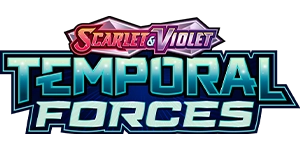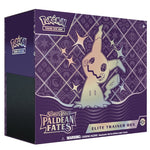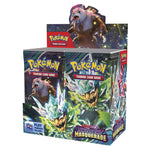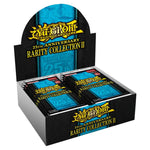The Pokemon TCG has seen a massive boom in recent years and there are tons of collectors in the hobby! Starting to actually play the game can be a bit intimidating, especially for younger members of the hobby. That's why we've complied a comprehensive blog on How to Play! This Blog will guide you through the different types of cards, to turn order and even how to win the game! So what are you waiting for!? Keep reading and find out how you can play your very first game!
Card Types
There are 3 main card types in the Pokemon TCG: Pokemon, Energy and Trainers.
Pokemon Pokemon are represented by cards that display their type and moves! Unlike the video games all Pokemon are divided into the following types: Grass, Fire, Water, Lightning, Dark, Psychic, Fighting, Metal, Dragon and Colorless. It is important to note the stages of your Pokemon and ensure that the lower stages of your Pokemon are included in the deck so you can evolve them. There are also special types of Pokemon such as Pokemon V, VMAX and VSTAR!
Energy Pokemon need energy to use their attacks. Basic energy cards are a great option as you don't have a limit on the number of them you can include. Special energy cards have extra abilities that affect the play of the game but are subject to the 4-copy limit!
Trainers Trainer cards help you to draw additional cards and give you a boost in your battle. They come in three types: items, stadiums and supporters. Items can be used an unlimited amount of times in a turn but you can only play 1 supporter per turn as they are generally more powerful. Make sure to include trainer cards that synergise well with the rest of your deck.
Deckbuilding
The rules for deck building are relatively simple: your deck must contain exactly 60 cards and you can only have a maximum of 4 copies of any named card (with the exception of basic energy cards)
Setup
Before you start playing, there are a few steps that you need to take.
Deciding on which player goes first The first step of setup s to decide who goes first! Usually the winner of a coin flip decides who goes first!
Drawing your Hand Once you have decided which player will go first, each player shuffles their deck and draw the tops 7 seven cards. If you don't have a basic Pokemon in your hand then you will need to mulligan!
Mulligan If you have no basic Pokemon in your hand, you must show your opponent your hand and then shuffle the cards back into your deck. Tjhe you draw 7 cards again, repeating this process until you get a basic Pokemon. You opponent can then choose to draw a card for each time you had to redraw in this way. If both players have to mulligan, only one player can draw additional cards equal to the difference in how many times each player had to redraw.
Placing Pokemon After all mulligans have been resolved, you then must place a basic Pokemon face down in the active spot. After this you may place up to 5 basic Pokemon face down on your bench.
Prize Cards The next step is to place the top 6 cards of your deck face down as prize cards without looking at them.
Play begins Turn over our active and benched Pokemon so the game can begin!
Turn Order
Each turn has 3 main parts: Draw, Actions and Attacking.
Draw
At the beginning of each players turn they draw a card from their deck. You lose if you have no cards left in your deck at the start of the turn
Actions
There are six basic actions that a player can use:. They can be used in any order. If you are the player going first you cannot use a supporter card on your first turn.
- Play a Basic Pokemon You can place as many Basic Pokemon from your hand to the bench that you wish. However, you may not have more than 5 Pokemon on your bench at a time.
- Evolve a Pokemon Evolution can give your Basic Pokemon stronger attacks and more HP! Stage 1 Pokemon can be placed over the Basic Pokemon they evolve from and Stage 2 Pokemon can be placed over the Stage 1 Pokemon they evolve from. A Pokemon cannot evolve on the same turn that it was played or evolve again on a same turn that it has already evolved. You also cannot evolve a Pokemon on your first turn of the game. When a Pokemon evolves it retains all cards attached to it as well as all damage counter it as. Any special conditions such as Asleep, Confused or Poisoned end when a Pokemon evolves. An evolved Pokemon cannot use the attacks or abilities of its previous evolutions.
- Attach an energy card Energy cards are used to power up your attacks that are used when attacking. Players may only attach one energy card per turn. Energy cards are attached by placing them under the Pokemon and they remain with that Pokemon until an effect or action removes them. Attack require specific types of energy as displayed on the card, colourless costs may be powered up by using any type of energy.
- Play a Trainer Card Trainer cards come in three varieties: Item, Supporter and Stadium.
- Item Item cards are most basic type of Trainer card and you may play as many from your hand as you have. After you have resolved an Item or Supporter card, you place it in the discard pale face up. The exception to this is Pokemon tools which instead are attached to the Pokemon like energy. A Pokemon can only have 1 Pokemon tool attached at a time and if the Pokemon is knocked out then the attached tool is place in the discard pile with the Pokemon.
- Supporter Supporter cards have more powerful effects, but you may only play 1 per turn. If you are the player going first you cannot use a supporter card on your first turn.
- Stadium Stadium cards remain in play and effect both players. Only 1 stadium can be in play at a time and if you play a new one it replaces the existing Stadium card which is placed into the discard pile.
- Retreat your active Pokemon Retreating allows you to switch your active Pokemon with a Pokemon on your bench! You can only do this once per turn. There is a cost to retreat, which is displayed in the bottom right of the card. You must discard energy from the Pokemon equal to the retreat cost. If no retreat cost is listed, then you may retreat our Pokemon for free. When a Pokemon retreats to the bench, all damage remains but any special conditions are removed.
- Use your Pokemon's abilities Some Pokemon have abilities that are distinct from attacks. Each ability is different so be carful to read it to find out exactly how it works. Some you must choose to activate, whilst others will activate if a certain condition is met or at a particular point in a turn. When you choose to use an ability, announce this to your opponent and resolve the ability as described on the card. Abilities do not count as attacks, so you may still attack after using any or all of your Pokemons abilities.
Attacking
Declaring an Attack Once you have performed as many actions as your would like you can choose to attack with your active Pokemon or end your turn! If you are the player going first, you cannot attack on your first turn. When you attack, you first select which attack of your active Pokemon you would like to use, making sure that you have enough energy of the correct type. For each energy symbol on the attack you must have a matching energy attacked, colourless energy symbols can be paid with any type of energy.
Weaknesses and Resistances The bottom of each Pokemon card shows if that Pokemon has any Weaknesses or Resistances against specific types of Pokemon. The type of a Pokemon is displayed in the top right of its card and Weaknesses and Resistance only take this into account and not the type of energy used to power attacks. Weakness double the amount of damage that a Pokemon takes from an attack, whilst Resistance reduced the damage by a specific amount. Weakness should always be calculated first and then Resistances should be applied.
Damage The damage of each attack is listed next to the attack on the Pokemon card. Not all attacks deal damage, but if they do , you first must adjust for Qeaknesses and Resistances (see below) and then place the correct number of damage counters on your opponents defending Pokemon. Some card effects alow you to place damage counters directly on Pokemon, and this is not effected by Weaknesses, Resistances or other effects that change the damage of attacks. When an effect refers to a damage counter, then it refers a damage counter that is equal to 10 damage. Damage remains on a Pokemon, even if that Pokemon moves to the bench or evolves. The only situations that would allow damage counters to be removed are when that Pokemon is healed, knocked out or removed from paly by other means.
Hit Points and Knocking out HP (which stands for Hit Points) shows the amount of damage a Pokemon can take before it is knocked out! HP is shown in the top right corner of a Pokemon card. If a Pokemon has damage on it equalling or exceeding it's Maximum HP, then it is knocked out. When a Pokemon is knocked out, you must move it and all of it's attached cards to the discard pile face up.
Winning Prize Cards When you knock out one of your opponent's Pokemon, you can add a card to your hand from your Prize Card Pile. Some effects allow you to take more than 1 prize card, such when you knock out a Pokemon V or Pokemon ex. If a player takes all their prize cards then they win the game.
Special Conditions and Pokemon Checkup
There are 5 special conditions that can be applied to Pokemon: Asleep, Burned, Confused, Paralyzed and Poisoned. Asleep, Confused and Paralyzed are all shown by rotating the Pokemon card in a particular direction, so a Pokemon can only have 1 of these special conditions at a time. Poisoned and Burned use special markers so they don't effect other conditions. Whenever a Pokemon is moved from the active position to the bench, then it recovers from all conditions. Pokemon also recover from special conditions when it evolves. Pokemon can recover from Special Conditions in-between turns, during a period known as Pokemon Checkup.
Asleep To show that a Pokemon is Asleep you turn it counter clockwise. A Pokemon that is Asleep cannot attack or retreat. During Pokemon Checkup, you flip a coin and on a heads your Pokemon recovers.
Burned A Pokemon can be burned by an effect or Attack. When a Pokemon is burned, you place a Burn marker on it. During Pokemon checkup place 2 damage counters on a Burned Pokemon and flip a coin, on a heads the Pokemon recovers from the burned condition.
Confused To show that a Pokemon is confused, you turn the Pokemon upside down, so that the top of the card faces towards you. A confused Pokemon could hurt itself when it makes an attack. When you declare an attack with that Pokemon, flip a coin. If the coin lands on heads, the attack works normally. If the coin lands on tails then the attack doesn nothing and you place 3 damage counters on the attacking Pokemon.
Paralyzed To show that a Pokemon is paralyzed, turn the card clockwise. A Pokemon that is Paralyzed cannot attack or retreat. After a players next turn, their Pokemon recovers automatically during Pokemon checkup.
Poisoned A Pokemon can be poisoned by an attack or effect. During Pokemon checkup you place a damage counter on a Poisoned Pokemon. The only way to recover from poison is to use card effects, evolve or retreat.
Winning the Game
There are several ways to win a game of Pokemon. In a typical battle, the winner if the first player to take all 6 of their prize cards. You can also win if you knock out your opponents active Pokemon whilst they have no Pokemon on their bench. You also win if your opponent has no cards left in their deck at the start of the turn.
What should I get Next?
We definitely recommend that you pick up a preconstructed deck to play you first couple of game. V Battle Decks and ex Battle Decks are specifically designed to be beginner friendly! Check out a selection of them down below in the related products section or click the button below to browse our entire range of Pokemon products!









